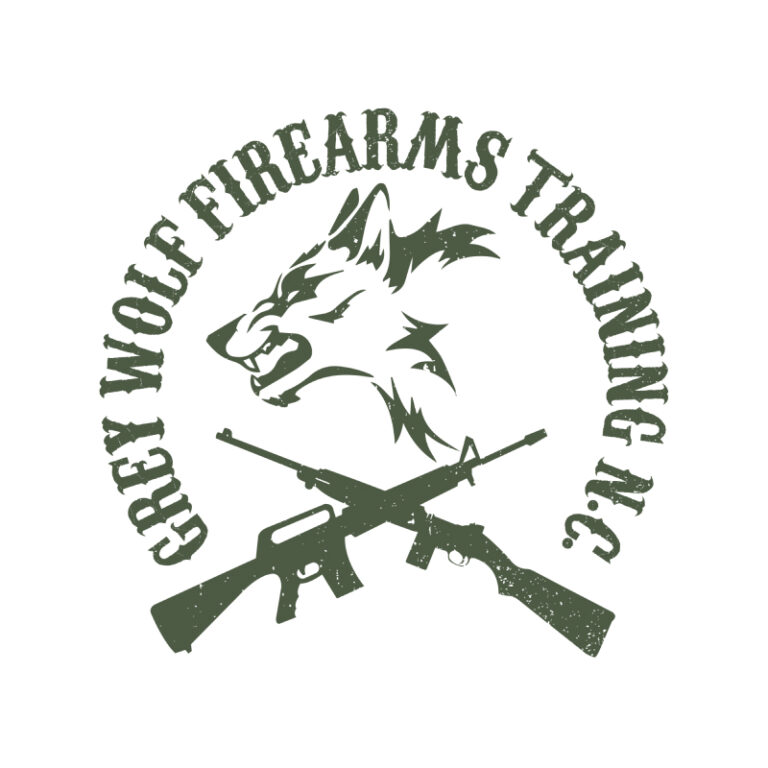![Should You Buy An AK? [AK vs. AR]](https://vault.armsdirectory.com/wp-content/uploads/2022/02/07064621/featured-image-1024x576.png)
Should You Buy An AK? [AK vs. AR]
Today, there are two primary form factors when considering a modern sporting rifle (MSR) for purchase – an AR15-style, and an AK-style – a classic showdown of AK vs. AR . Each has a different manual of arms, and requires training and practice in order to use efficiently, and effectively.
Here in the US, the AR15-style rifle will probably be more familiar to most of us, whereas elsewhere in the world, the AK is the standard.
Since this blog post is about considering whether adding an AK-pattern rifle to your collection is something you might consider, a topical comparison seems to be in order.
AK vs. AR: Head to Head
DESIGN
Let’s start with the fact that not only are they different designs, but they also fire very different cartridges. Military doctrine for old “Soviet” vs “NATO” differ, and the round chosen reflects those varying perspectives. Each is highly effective, given its intended design.
![Should You Buy An AK? [AK vs. AR]](https://vault.armsdirectory.com/wp-content/uploads/2023/09/07064149/body-image-1-2.png)
If you’re relatively new to AK guns, or to modern sporting rifles (MSRs) in general, don’t take this as gospel. There is a large, diverse market out there (we’re in the “Golden Age” of firearms, after all), and there will be exceptions, hybrids, personal builds, Frankenguns, and all other manner available to you.
Take some of this with a grain of salt. If you can dream it, someone has probably already built one! In this comparison of AR vs. AK, I hope to shed some light on whether you might want to get yourself one, the other, or BOTH!

WEIGHT
In general, AR-pattern rifles and their corresponding cartridges tend to be lighter. US military philosophy holds that it’s better to be able to carry more ammunition.
As their carry kit is heavy as it is, soldiers shouldn’t have to choose between sufficient ammunition and food. Russian philosophy? Not so much!
The original AK tipped the scales at a chunky 8.5 lbs, whereas the original AR weighed in at a svelte 6.5 lbs. Not only is the AK rifle heavier, but the ammunition is also significantly more weighty. 500 rounds of 7.62×39 will tip the scales at 21 lbs, whereas the same amount of 5.56×45 ammunition weighs just 13 lbs.
Meaning, given the same carrying capacity, the person carrying the AR-pattern rifle could carry nearly twice as much ammunition with them – a definite advantage! Thus, when comparing the weight of an AK vs. an AR, the winner is…
Winner: AR-Pattern Rifles
![Should You Buy An AK? [AK vs. AR] - Weight Comparison](https://vault.armsdirectory.com/wp-content/uploads/2023/09/07064324/body-image-3-1.png)
ERGONOMICS
There’s no denying that the two rifles are different, but does that difference actually make a difference? When Stoner designed his creation, he must’ve had ergonomics in mind. To drop an empty magazine requires one finger, inserting a new mag and dropping the bolt is accomplished with the other hand in a single, fluid motion.
The safety can be engaged, or dropped, without having to remove your finger from the trigger. Furthermore, the adjustable stock found on most AR MSRs allows for different lengths of pull, ensuring that shooters of all sizes can more effectively use one.
In today’s market, fully ambidextrous models abound, meaning that either hand can accomplish necessary tasks depending on what works best for you. AK guns require two hands to remove an empty mag, replace it, and charge the weapon, which results in longer transitions involving multiple steps and taking your finger out of its firing position.
Furthermore, engaging or dropping the safety on an AK requires yet another, separate action with the trigger finger, removing it from the firing position.
Winner: AR-Pattern Rifles
UPGRADES
AR MSRs have had some type of standardized rail system on them for decades. Furthermore, AR15-pattern rifles have been standardized (incorrectly referred to as “Mil-Spec” – Mil-Standard is the more correct term, but either gets the point across).
This is not to say that you cannot fit your AK-pattern gun with a rail, but doing so can be complex (and expensive) if you don’t know what you’re doing. Because the AK-pattern rifle is such a worldwide success, many spin-offs have been made by different countries that want to customize their rifles to suit their particular military needs.
This has resulted in a dizzying array of standards that can seem complex to decipher – at least for ME it is. Adding rail sections to your AK is a little more involved than the simple drop-in designs and offerings you see for today’s modular AR-pattern guns.
I refer to the AR-pattern of rifles as “Legos for big boys” (and girls too!). Want a new and improved stock? Pop the old one-off, and replace it in seconds. Want a better trigger? Pop-out two pins, remove the old one, drop the new one in, and replace the pins – done. Want lights, lasers, red dot sights, LPVO, or scope?
That’s what Picatinny rails are for! With the AK, you’re going to have to change some parts out. The difference isn’t so much what can be done, but more or less how it comes out of the box.
Winner: AR-Pattern Rifles
PRICE
“You get what you pay for” is, in my opinion, never more true when it comes to firearms. The genius of the AR-pattern rifle is the ease with which it is manufactured. The genius with the AK-pattern rifles is the ease with which it is used, and the fact that even if it’s built wrong, the design is so robust that it usually works anyway.
There is a much higher degree of precision required to make an AR-pattern rifle work, and that costs money. It requires specialized tools, machinery, and enormous factories, as well as genuine experts to manufacture an AK-pattern rifle. And THAT costs a lot of money.
Today’s economic climate notwithstanding, a quality “basic” MSR in either pattern will likely set you back around $1,000 before you invest in accessories, optics, training, and ammunition. This is not a cheap hobby!
Winner: Draw
MAINTENANCE
To maintain your weapon, make sure it remains accurate, reliable, and lasts you as long as possible before it needs parts replaced. To service your MSR, regardless of which pattern you choose, is generally very straightforward, and easy to perform. Particulars are platform-specific but simple.
Winner: Draw
RELIABILITY
I suppose that depends on the environment, and how you use and maintain your rifles. AR-pattern MSRs are built with high precision and tight tolerances, whereas your AK-pattern MSRs are “rattle traps.”
The AKs are designed to operate in harsh environments due to the fact that the looser part-to-part fit keeps a grain of sand from locking up the assembly. If you’re going to pour water on them and freeze them overnight, your AR-pattern gun won’t function well the next day.
That’s probably no surprise to anyone. If you’re going to dunk them in the mud, your AK-pattern gun won’t work well due to the open receiver design. But in general, the AK-pattern guns have a more robust nature to them, and are much more forgiving when it comes to “deferred maintenance,” and they will usually continue to run long past their designated intervals.
In other words, the AK-pattern rifle can get pretty dirty and just keep on running. All things being equal, if you’re the typical user, then both types of rifles will work just fine.
Winner: AK-Pattern Rifles
DURABILITY
Many people have fired countless thousands of rounds through their AK and AR-pattern guns, and they continue to work just fine. But durability, when factoring in other environmental variables, CAN be an issue. AR-pattern MSRs use lightweight materials, up to and including “pencil barrels”, polymer furniture, and even polymer handguards/sights.
Prodigious use of polymers can assist in wet environments and weight savings. I’ve handled ARs in the 4-5 lb weight range and believe that it greatly reduces their ability to withstand abuse. The AK-pattern MSR typically uses wood, steel, and/or polymers.
They are, by their nature and design, significantly heavier and less sensitive to environmental abuse and stress. “Mortaring” your rifle, the practice of striking the rifle’s stock against the ground to clear a stuck round/casing, can more easily break your AR-pattern gun, than it would the AK.
Ultimately, the battle of AK vs. AR is clearly won by the first, in terms of durability.
If environmental abuse is something you’re concerned about or evaluating, AK guns might be the safer bet for you.
Winner: AK-Pattern Rifles
ACCURACY
This is a hotly debated topic. It is generally accepted that the AR-pattern MSR is inherently more accurate than its AK counterpart, but that’s only part of the story. Here in the US, we enjoy a tremendous variety of ammunition options.
On the other hand, good quality and precision ammunition for the AK-pattern MSRs is few and far between. That’s because the AK was never designed to be a designated marksman rifle. It’s “combat accurate” – which means you can hit a man-sized target out to 300 meters and beyond, without much trouble.
Without getting into barrel harmonics, pistons vs. direct impingement, inertia, or aiming systems, suffice to say that if your goal is to cloverleaf a pattern of holes at 100 yards, a mid-range ($1,000-2,000) AR is likely in your future. If you are looking for a solid, reliable rifle that will go bang when you pull the trigger and is “accurate enough” for combat/defensive purposes, then the AK Rifle will do the job.
Winner: AR-Pattern Rifle
![Should You Buy An AK? [AK vs. AR] - Nyet, Rifle is Fine](https://vault.armsdirectory.com/wp-content/uploads/2023/09/07064406/body-image-4-1.png)
Final Verdict: Should You Buy an AK-47?
Ultimately, who wins the battle of AK vs. AR? Should you choose an AK over an AR? Is it worth it to buy an AK-47?
Well, if what you’re looking for is a firearm that is “combat accurate,” durable, reliable, and easy to maintain. It’s hard to beat an AK-pattern MSR.
Still, in the end, beauty is in the eye of the beholder. Why not have both? The more guns, the better – that’s what I say!
What do you have to say? Do you think AR vs. AK is won by AR, or is it the other way around? Comment below and don’t forget to check out our Business Directory!



![The Ultimate Shooting Accessories for Every Weapon [A 2023 Beginners Guide]](https://vault.armsdirectory.com/wp-content/uploads/2023/08/30071223/The-Ultimate-Shooting-Accessories-for-Every-Weapon-A-2023-Beginners-Guide-1024x576.png)

![Gun Registration Requirements by State [What You Need to Know]](https://vault.armsdirectory.com/wp-content/uploads/2023/10/27073220/Gun-Registration-Requirements-by-State-What-You-Need-to-Know-1024x576.png)

![The Right Way to Buy and Sell Firearms Online [Guide]](https://vault.armsdirectory.com/wp-content/uploads/2023/10/20050323/The-Right-Way-to-Buy-and-Sell-Firearms-Online-Guide-1-1024x576.png)
After reading this post I think that the answer is HOW MANY?!
They sure are fun to shoot! If you’re looking for something special, you can look at Meridian Defense, Rifle Dynamics, Fuller Phoenix – as good choices that start with a rock-solid foundation. Either stamped or milled receivers, and FORGED, heat-treated, trunnions.
Tactical Edge, a company that makes “premium AK’s” feels like this is an underserved market. They feature Cerakote instead of nitride, TiN bcgs and pistons, upgraded triggers and upper/lower hand guards. But these are all “upgrades” you can make on your own. IMO, NYET!! Rifle is fine!
https://www.recoilweb.com/the-tactical-edge-comrade-ak-150596.html?fbclid=IwAR3tACikeBn6J9hQC9n2pZRhNK9TdGuxWTkJBuOON-z0k_eUtyqSt_YTGyo
NYET! LOL!
Why not BOTH!!!???? I have a Palmetto State Armory GF3 AK47 that is awesome! Price is right too!
Ak Ak Ak Ak Ak Ak Ak Ak
Have AR’s and like them. Why not get an AK. I do like the cartridge and reliability.
Who was that Masked Man???? Somebody pick up those silver bullets!!!! Some fit the AR and the bigger ones fit the AK!!!!!
I think the bigger question is, why would you NOT want to own an AK?